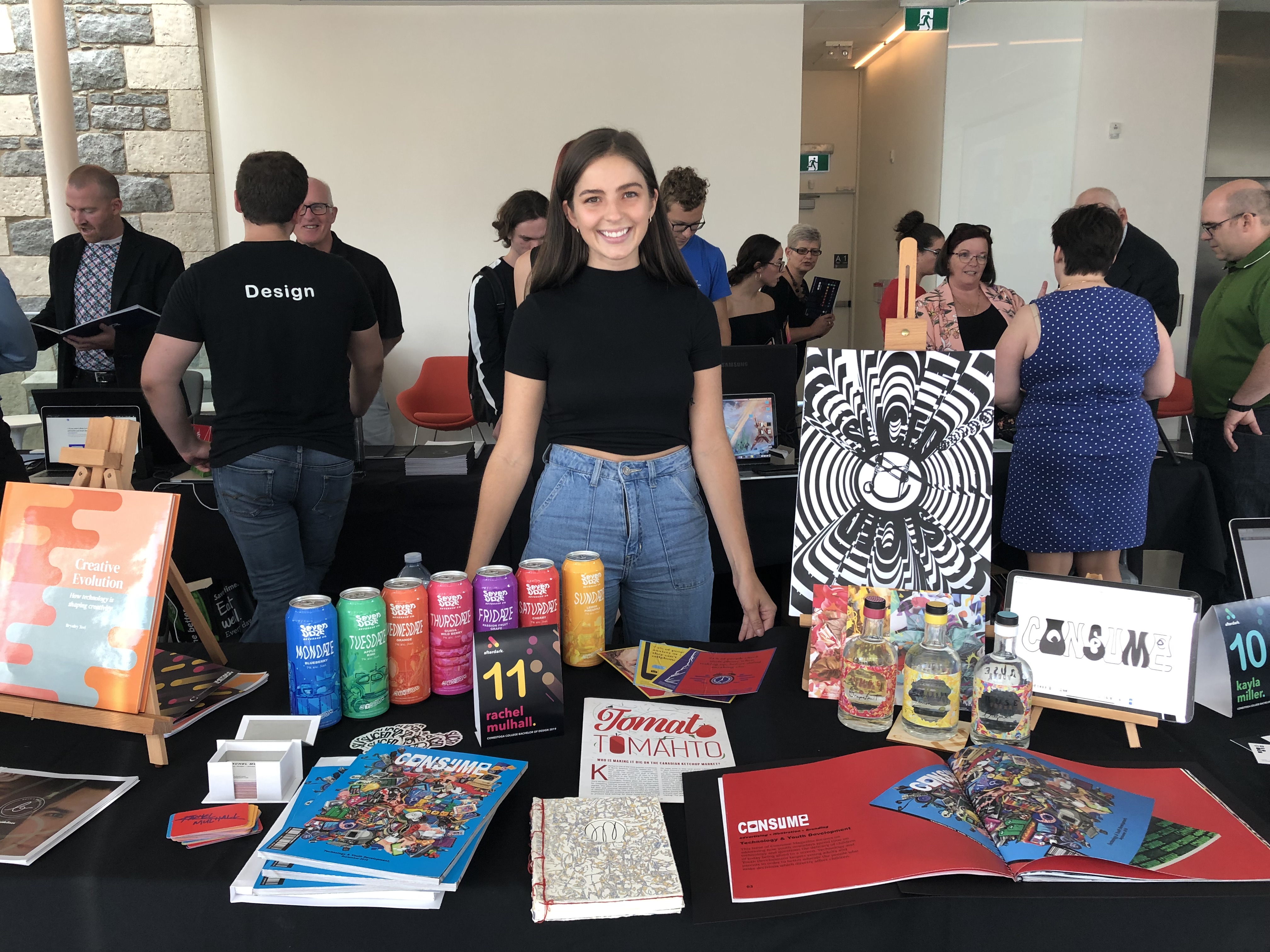Graduating students in Conestoga’s Bachelor of Design degree program welcomed the college community to the Idea Exchange at the Old Post Office in Cambridge on August 22 for Afterdark -- an end-of-term showcase to celebrate student skills and talent.

Graduating Bachelor of Design student Rachel Mulhall presented projects completed throughout the program, including her design thesis, at Afterdark -- an end-of-term showcase to celebrate student skills and talent.
The showcase featured a variety of work encapsulating each student’s personal focus, style and growth through projects completed over the four-year course of the program, including a design thesis.
“Afterdark celebrates our students’ journey,” said faculty member Michael Castledine. “They were challenged to diverge and converge on various design problems, generating debates and conversations around education, e-commerce, mental health and the state of our environment. Each design solution is presented and supported with industry and business insights and highlights the new talent coming out of the program.”
For his thesis project, student Andrej Babić created a learning aid aimed at teaching students in Grade 6 how to code. Code-ometry includes an online visual code editor and an accompanying workbook to teach basic concepts of coding while reinforcing the objectives of the geometry unit in mathematics curriculum.
“The idea behind code-ometry,” said Babić, “is that it provides more hands-on learning in the classroom to help students develop problem solving and critical thinking skills through computational thinking.”
Computational thinking is a set of problem-solving methods that involve expressing problems and their solutions in ways that a computer could execute. During his research, Babić discovered that children with computational thinking knowledge perform better academically overall, become better critical thinkers and problem solvers, and have more confidence when presented with situations of uncertainty.
Also presenting their thesis project was student Jonathan Collie, who created What’s Next; Challenges of Global Sustainability. During the showcase, it was announced that Collie received the RGD (Registered Graphic Designers) Grad Award, presented to top graduating design students as selected by their schools.
Earlier this year, Collie was also honoured with Conestoga’s Co-op Student of the Year award for the work term he completed at Medly Labs. Two back-to-back co-op work terms between years three and four are included within the program that provide students with opportunities to apply their skills and knowledge as they gain real-world, professional experience.
Other thesis projects on display included Consume Magazine, a publication that focused on addressing youth development in relation to screen time by Rachel Mulhall; ebb, a responsive website that helps designers create with other cultures in mind by Monica Baran; and Shop Naked, a brand committed to supporting the zero waste and zero plastic movements by Kayla Miller.
“I’m proud to see the culmination of hard work at the end-of-term showcase,” said program coordinator Ryanne Spies. “Our program consistently produces award-winning students, many of which secure employment immediately after finishing their thesis -- a true testament to their dedication.”
Conestoga's Bachelor of Design is unique in Ontario for offering an inter-professional perspective that blends graphic design, business and liberal studies courses with co-op opportunities. As a comprehensive design program, students take courses in typography, visual design, colour theory, design studio, drawing and illustration, graphic design history, photography, interactive design, as well as branding, marketing, business management, and writing and presentation skills.
The program employs a project-based learning approach that integrates design, research methodologies, project management, and business strategy skills, as well as a variety of issues including accessibility, sustainability, and corporate and social responsibility.
